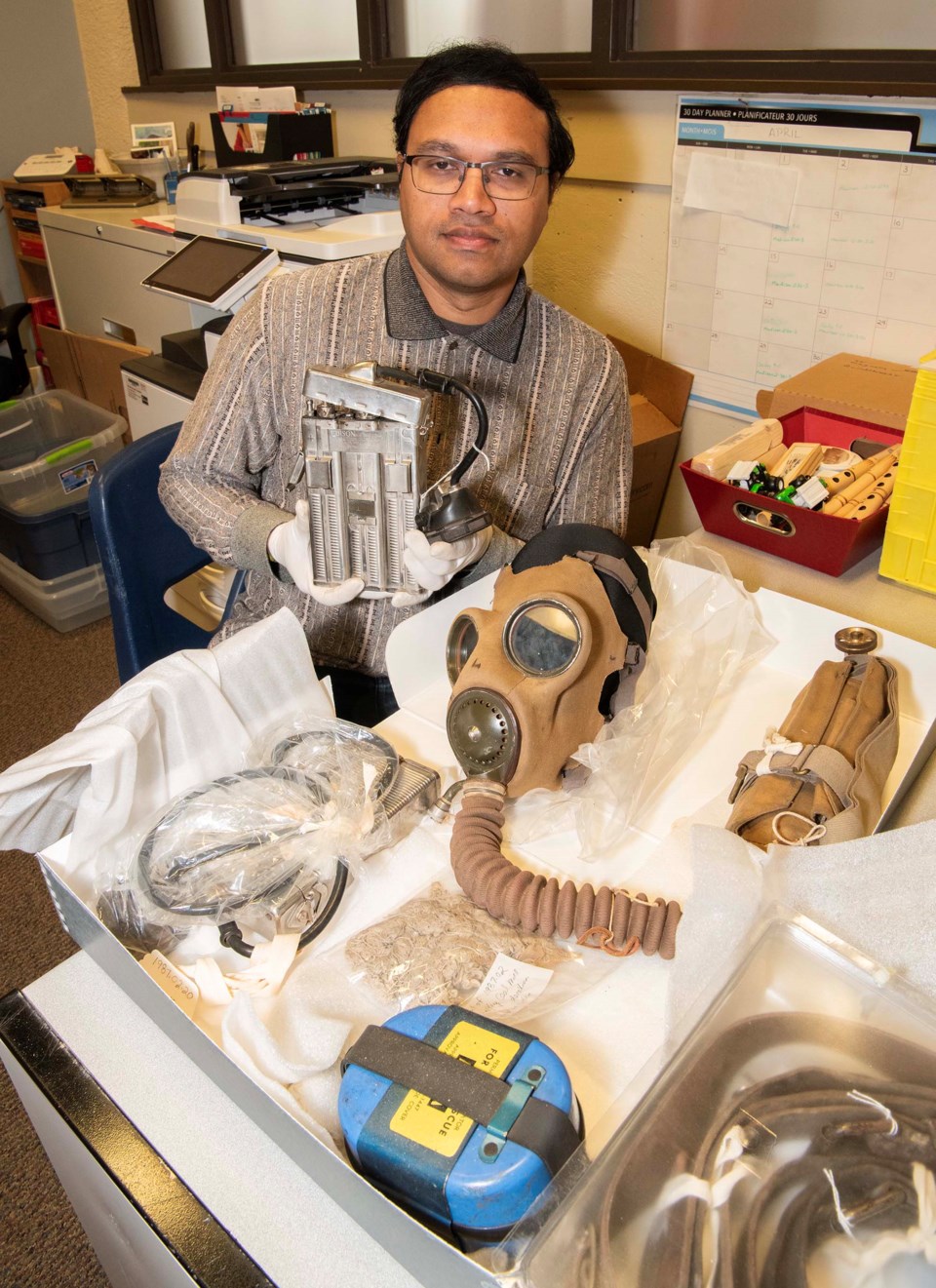What’s in a Name?
The Gazette is looking at the history behind the names of places in St. Albert in light of the city’s decision to rename the Grandin neighbourhood. Curious about a place’s name? Send it in to [email protected] so it can be examined in a future story.
Youngsters nowadays might wonder why St. Albert has a Coal Mine Road and a Coal Mine Park but no actual coal mine.
Coal Mine Road is so named because it used to lead to a mine in Sturgeon County: the Star-Key Mine.
The mine’s entrance was right where Coal Mine Road/Twp. Rd. 544 intersects with Starkey Road/RR 251 in Sturgeon County today, said St. Albert resident Carol McRae, 86, who lived on the Star-Key Mine site with her family for decades.
“Star-Key Mine was pretty important in the community at the time, as it provided a lot of employment for people and also provided heating for homes,” McRae said.
“Coal Mine Road came right from St. Albert to the mine.”
Life in the pits
Coal mining in St. Albert dates back to the early 1900s with the Canadian Coal and Coke Co. Ltd., which operated a mine around what is now Harwood Drive from about 1911 to 1917, said Musée Héritage Museum archivist Vino Vipulanantharajah. Members of many longtime St. Albert families, including the Perrault and Lavoie clans, worked in the Star-Key Mine at some point.
Star-Key Mine opened in 1945 and closed in 1979. It was one of the many businesses owned Jack Starky, a baseball player, golfer, curler, figure skater, and Edmonton Sports Hall of Fame member, documents from the Provincial Archives of Alberta show.
McRae said her father, Bror “Bud” Holmgren (namesake of St. Albert’s Holmgren Crescent), had been working at one of Starky’s other mines when this new one opened in 1944. He took up the post of surface foreman and moved his family on-site. She recalled how Holmgren would often come home after work, grab his rifle and go out to hunt ducks and pheasants.
“He loved music and liked to sing. We’d all get in the car for road-trips and we’d sing all the way.”
McRae said visitors to the mine would have seen a single entrance that led to a series of large rooms with branching tunnels carved out of a 2.4 m thick seam of sub-bituminous coal, which was used mainly to heat homes and create electricity. Crews hauled up to 95,000 tons of coal out of the mine each year, excavating some 160 acres of the stuff during the mine’s lifetime, the Edmonton Journal reports.
Touring the mine in 1974, the Edmonton Journal’s Steve Hume described it as place of darkness, stone, wood, and water, where men used picks, dynamite, and a thunderous cutting machine “that looks like a power saw designed for Paul Bunyan” to shatter coal for collection into carts. A team of 20 horses that lived almost year-round in the mine hauled those carts in the early days; they were later replaced by electric engines.
Coal from the mine was hauled into a tower-like structure on the surface called a tipple and dumped into trucks for delivery to St. Albert, Edmonton, and other regions, McRae said. At the end of their shifts, workers would clean up in the wash-house and head home on the mine’s dedicated bus.
McRae recalled how workers at the mine went on strike in a few years after it opened. Crews piled snow on area roads to block the bus and formed a picket line — one she and her siblings had to cross each day during the strike to get to school.
“I was seven or eight years old, so it was kind of scary,” she recalled.
McRae said a fire destroyed the mine’s tipple in January 1958. During reconstruction that May, worker Jim McMillan died from injuries sustained when a whirlwind flung a chunk of wood at his head.
“That was the same day my sister was getting married,” McRae noted.
Forgotten history
The Star-Key Mine was the last coal mine in Edmonton when Hume toured it in 1974. Strip-mining and natural gas heating had rendered it “a ghost from another era,” with its production falling to 65 tons a day from a peak of 1,000.
Starky sold the mine to Holmgren and other mine workers in 1961, McRae said. Holmgren died in 1974; his wife, Gertrude Holmgren Duxbury, moved from the mine site to St. Albert four years later. Inland Cement bought the mine in 1977 and closed it in January 1979. Crews tore down the mine’s buildings, plugged its entrances, and erased it from the landscape.
Today, the mine site is mostly open fields. Coal Mine Road itself also started to disappear in the 2010s, with a long stretch of it converted by St. Albert city council to trails and other amenities to address development and traffic pressures.
“If you go along Coal Mine Road now, there’s just acreages,” McRae said.




